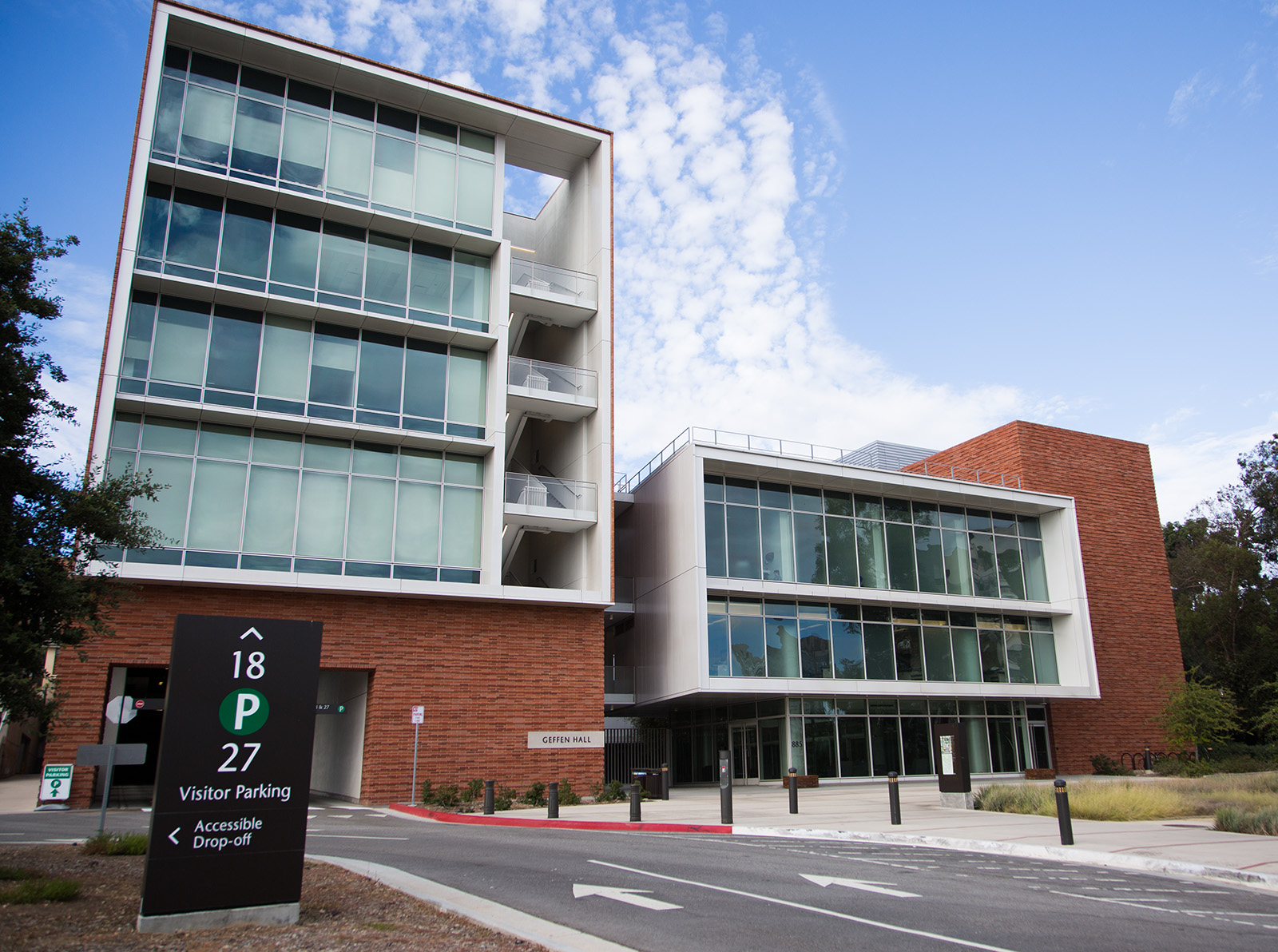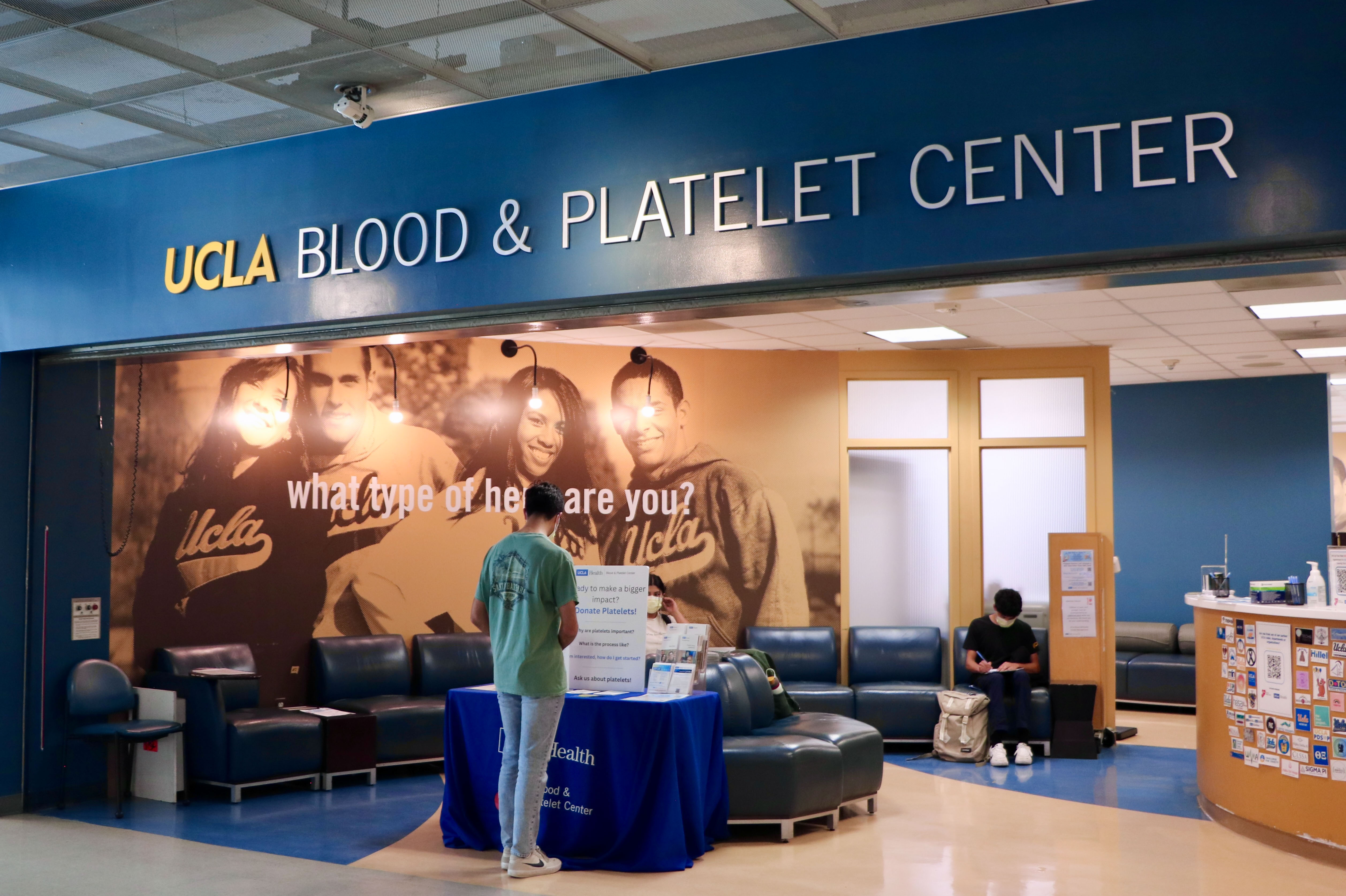Researchers identify gene crucial to blood stem cell regulation, growth

(Matthew Park/Daily Bruin)
By Danielle H. Cho
Oct. 15, 2024 8:25 p.m.
This post was updated Oct. 18 at 12:12 a.m.
UCLA researchers have found a gene that may have implications for treating blood-related genetic diseases and cancers.
All types of blood cells come from blood stem cells, said Júlia Aguadé-Gorgorió, the first author of the paper that presented the findings and a former assistant project scientist. Blood stem cells can be taken from a healthy person, cultured and transplanted to reconstitute a patient’s blood for life, she added.
However, Aguadé-Gorgorió said cells grown in culture – outside a living organism in a petri dish – often struggle to multiply to adequate numbers and fail to travel to and settle in the bone marrow. She added that the failure of such cells to reach the bone marrow is an indicator of them losing their stem cell properties.
The questions driving the study were related to blood stem cells losing their functionality in culture, said Dr. Hanna Mikkola, the study’s corresponding author and a professor of molecular, cell and developmental biology.
For the study, researchers looked at genes that affect blood stem cells in culture, Aguadé-Gorgorió said, which led to the discovery of a gene – MYCT1 – that was downregulated in cultured blood stem cells compared to healthy human blood stem cells.
Removing the MYCT1 gene negatively impacted blood stem cells’ ability to expand and locate the bone marrow, said Iman Fares – a co-author of the paper and former postdoctoral researcher – in an emailed statement. Reintroducing the gene, however, restored both of these abilities, Fares said in the statement.
Aguadé-Gorgorió said this finding indicated MYCT1’s importance.
The scientists then performed experiments that showed that MYCT1 interacts with the machinery of endocytosis – the process through which cargo is brought into the cell, Aguadé-Gorgorió said. Mikkola added that they found that MYCT1 impacts the regulation of this process.
MYCT1 has wide-ranging effects on the cell because endocytosis is a process that regulates environmental sensing, Aguadé-Gorgorió said. When endocytosis is dysregulated, many external signals – including iron, lipids and sugars – will not be perceived correctly, she added.
“This beautiful concert or whispering now becomes a screaming when they (blood stem cells) lose their ability to regulate endocytosis,” Mikkola said.
Blood stem cells require external factors, the right intrinsic machinery and tools in the middle to interpret intercellular signals, Mikkola said. With this study, she said researchers have now identified a new critical item in this toolbox.
This study not only has implications for therapeutic purposes but could also help further research on blood stem cells by prolonging their stem cell properties in culture and the length of time they can be studied, said Kenneth Dorshkind, a professor of pathology and laboratory medicine.
MYCT1 could also be used as a readout for whether certain conditions promote stemness, Dorshkind said.
Aguadé-Gorgorió said the study revealed that there must be a two-pronged approach to maintaining blood stem cell properties in culture: Not only do the appropriate nutrients and factors need to be added to the culture, but the internal signaling pathways inside the cell must also be intact.
This research may have implications for treating blood-related genetic diseases such as sickle cell disease and blood malignancies such as leukemia by allowing researchers to better expand blood stem cells, Mikkola said.
“Even if you can do a perfect gene editing or gene correction but you lose stemness at the same time, this will not be benefitting the patients,” she said. “We need to be able to maintain their unique functionalities while we are doing this gene correction.”



